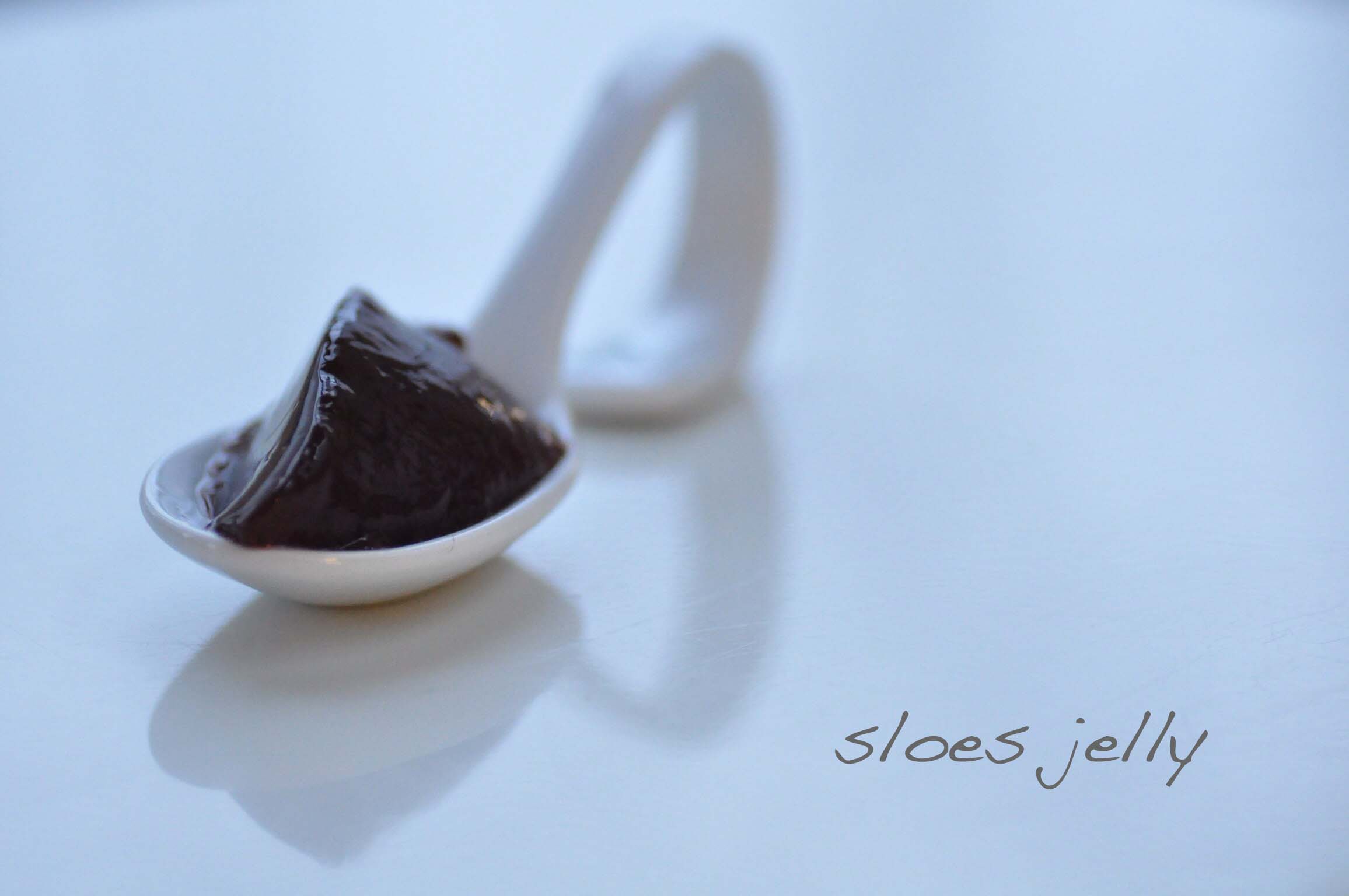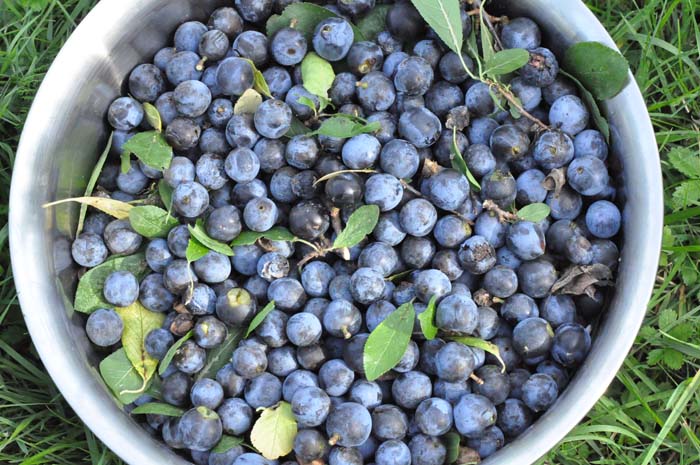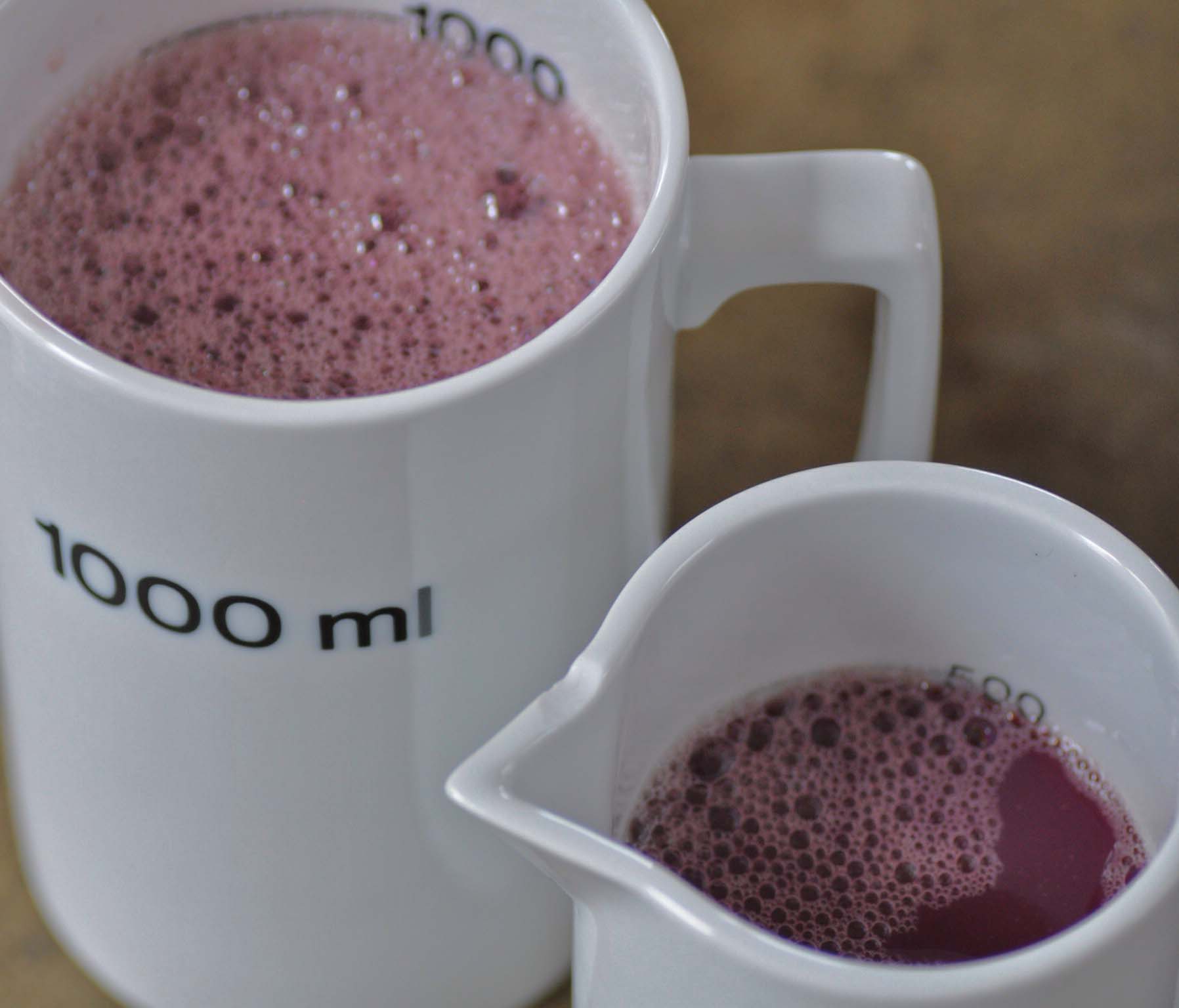my very first memories of sloes are that you can eat them only after the first frosts, that they are sweet and sour at the same time, that you get furry teeth from them and the subtle fear that the bushes on the roadside i was eating from are potentially not sloes. i was seven or eight, maybe younger. many things changed since then. one is that i definitely recognize sloes.
well, other things didn’t change, as you still have to wait for the first frosts until you can go for sloes. but because it is a race against the birds, there is also the option to harvest the sloes in autumn and to put them in your freezer. it has the same effect and you can be sure the sloes will be yours.
if you have no idea where to find sloes, check it out at mundraub.org. it is a platform where people share places to find fruits, vegetables or herbs for free. you can find sloes very often in parks or roadsides.
probably there are many things you can do with sloes. my first idea was making sloes jelly and it is much more easy than you may think. there will be no plucking of stems and no annoying deseeding in the preparation phase. you will cook the entire sloe and the entire apples (which you will need in addition) with stems and kernels and everything. it is less work than many other jams you may have prepared before.
and the result is extraordinary. my family spontaneously elected the sloes jelly to the best jam of the season. it keeps the great sweet and sour balance of the fruits, which is by the way an ideal flavor to fill donuts/pfannkuchen.
halve sloes/ halve apples
halve a lemon per kilo of apples
jam sugar
give the sloes (with stems and kernels) in a large pan and cover with water. bring to a boil and then simmer until the sloes are very soft and almost pulpy. add the apples (simply halved or quartered, with stems and kernels) and simmer again until the apples are pulpy as well.
cool down a bit. prepare a large pan with a sieve and an old kitchen towel, muslin or jelly bag. strain the fruits through and let it rest for a night. all the juice will dribble through the kitchen towel in that time without any solid fruit particles in the juice later.
the next day you can measure the juice and add the appropriate amount of jam sugar. you will find the relation of juice and sugar on the package of the jam sugar as well as the cooking time. never the less make the jelly test before you finish the cooking time. give a blob on a plate and see if it gets the consistency you prefer after it cooled down a bit. if you are happy with the result, fill the jelly in jars, close them, turn them for about five minutes upside down to get a vacuum inside and your done!
enjoy and make others happy with a homemade sloes jelly!
********************
schlehen und äpfel, halbe halbe
pro kilo äpfel eine halbe zitrone
gelierzucker
die schlehen samt stielen und kernen in einen großen topf geben und mit wasser bedecken. aufkochen und dann bei geringer hitze köcheln, bis die schlehen sich von den kernen zu lösen beginnen. dann die äpfel dazu geben, die bloß halbiert oder geviertelt werden. auch hier können die kerne und stiele mit gekocht werden. erneut köcheln lassen, bis auch die äpfel weich sind.
etwas abkühlen lassen und einen topf mit einem sieb vorbereiten, das mit einem küchentuch, musselintuch oder geleetuch ausgekleidet wird. die früchte samt saft hineingießen und über nacht stehen lassen. in dieser zeit wird der saft langsam durchs tuch laufen, ohne das später noch fruchtanteile darin zu finden sind.
am nächsten tag wird der saft abgemessen und die entsprechende menge gelierzucker dazu gegeben. das mischungsverhältnis ist auf der packung angegeben, ebenso die kochzeit. nichts desto trotz empfehle ich den geliertest. gib dazu einen klecks gelee auf einen teller und prüfe die konsistenz, nachdem es etwas abgekühlt ist. wenn das gelee fest wird, ist es soweit. fülle es in gläser, verschließe sie gut und stelle sie für wenige minuten auf den kopf, um ein vakuum herzustellen. und fertig!



